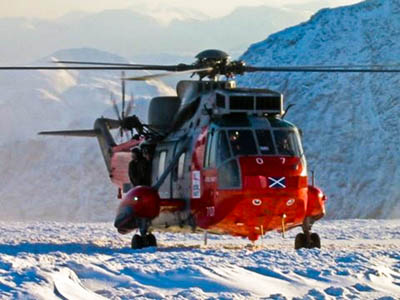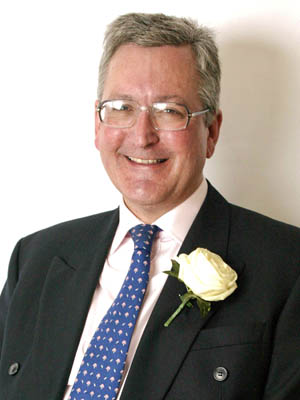The Scottish Government today pledged to carry on its financial support of mountain rescue teams north of the border.
Communities Minister Fergus Ewing announced £300,000 of funding for the 24 volunteer teams. The teams also launched their new software to combine search and rescue operations with Ordnance Survey mapping.
The minister – himself a former mountain rescuer – joined members of the Mountain Rescue Committee of Scotland at the Lomond Mountain Rescue Team’s headquarters in Drymen.
The software, which the MRCofS says will enable incident managers to record planning and search strategy more accurately, will be used to help future search and rescue activities. Each team will be given a copy of the software, a laptop computer and printer.
The system was chosen by a working group, using software supplied by Map Maker. It allows rescuers to ‘draw’ on the maps and save search areas for future use.
The committee released figures showing mountain rescue incidents remained at a static level despite the increasing popularity of the country’s hills and mountains for leisure.
The busiest teams were Lochaber and Glencoe, accounting for 28 per cent of all callouts and clocking up more than 4,000 man-hours between them.
Dogs from the country’s two Search and Rescue Dogs Association groups were involved in 27 per cent of incidents.
Hillwalking proved the most hazardous activity, with 13 deaths and 40 serious injuries during 2008, in both winter and summer conditions. Three climbers died on Scotland’s mountains, along with one scrambler and one deerstalker.
There were 387 incidents in all, with hillwalking accounting for 75 per cent of teams’ ‘business’.


Steve Gilchrist
10 June 2009To say that "Hillwalking proved the most hazardous activity" is misleading and just plain silly. How many people are hillwalking as compared to other activities, the risk of harm (hazard) is much lower in hillwalking than in the other activities mentioned and is barely higher than walking around a town.
david johnson
10 June 2009I know where you're coming from, but I read it that, statistically, hill walkling accounted for the lion's share of the mountain rescue teams' activity (which one expect to be the case). I assume it refers to hill walking, as against other activities the teams are involved in (skiing, rock-climbing, fell-running, etc.??).
David